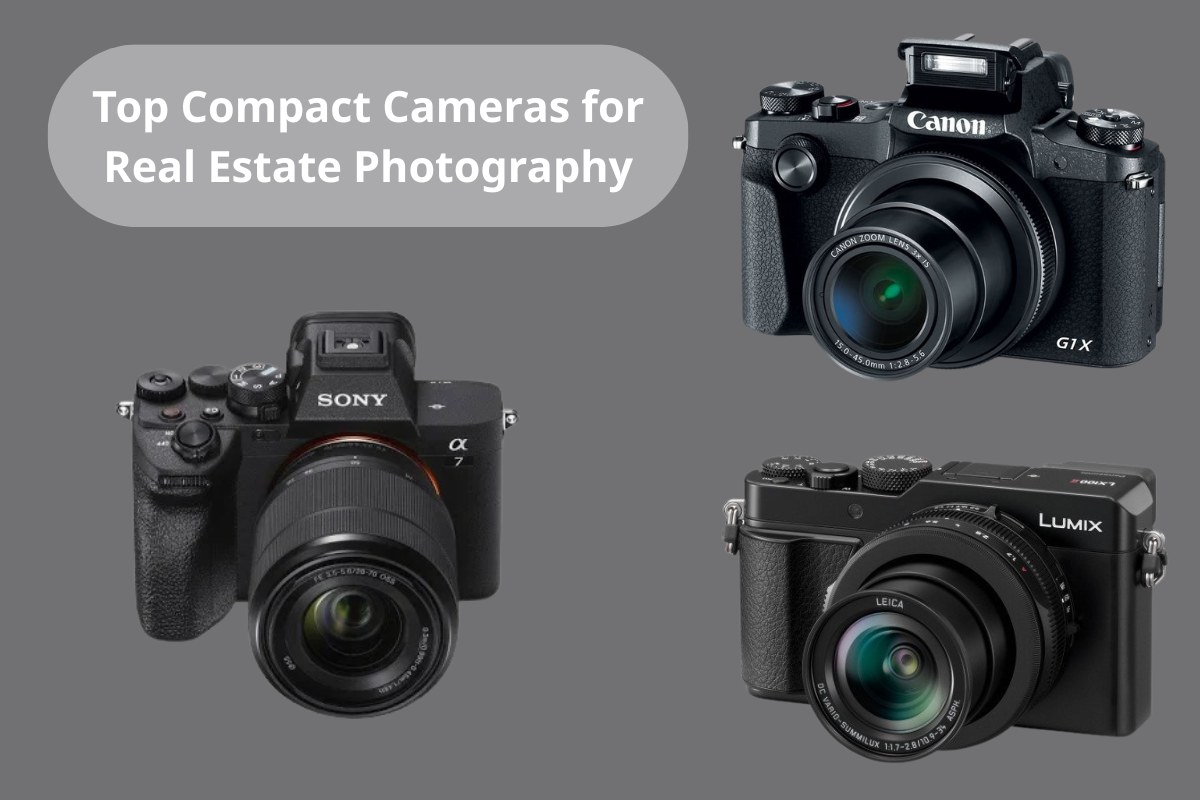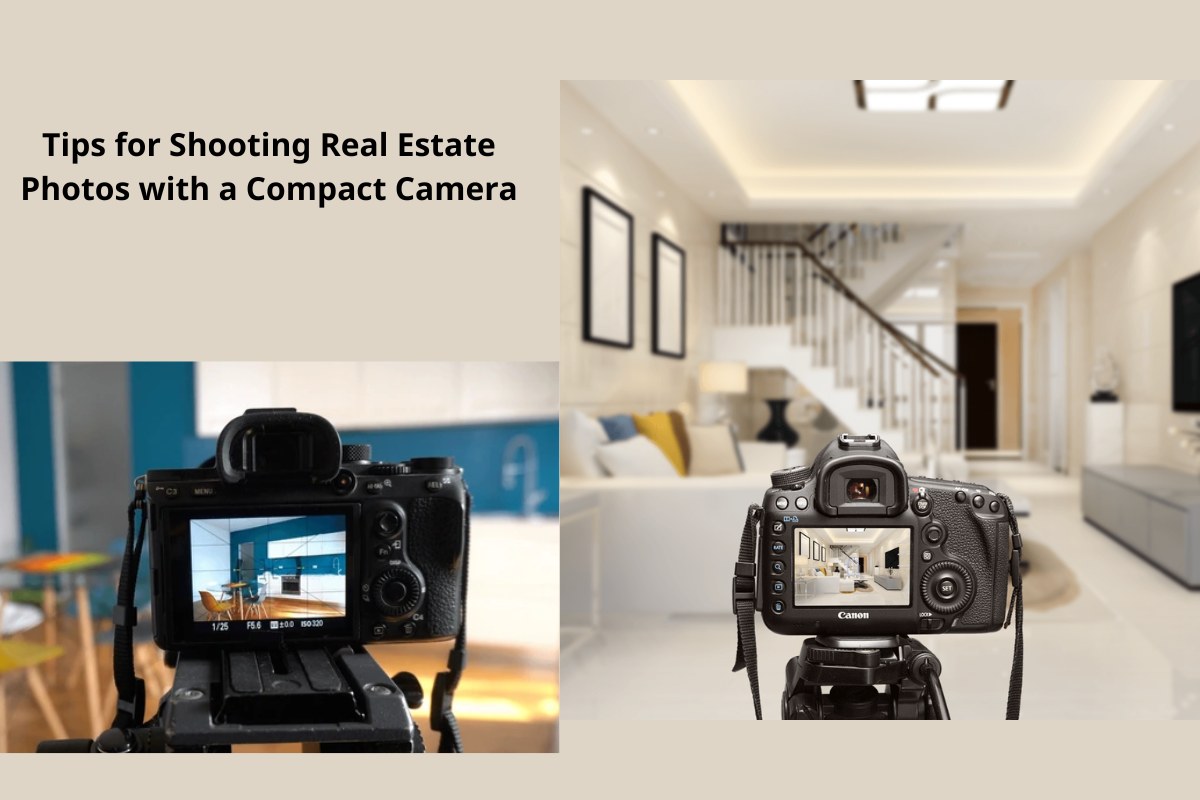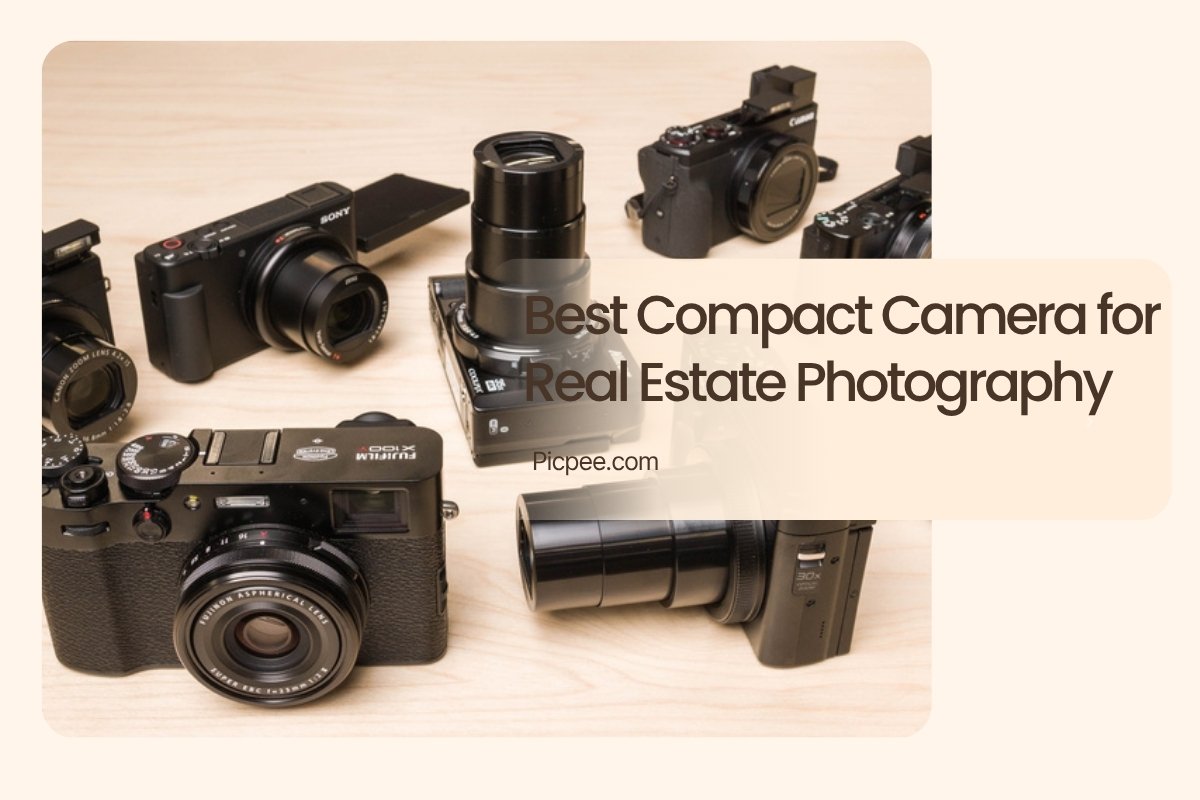In real estate marketing, powerful visuals drive buyer interest. Compact cameras, once basic, now offer high-quality images, portability, and easy handling—perfect for property shoots. Their advanced sensors, manual settings, and wide lenses make them ideal for realtors and photographers alike. This guide explores the best compact cameras for real estate photography, highlights must-have features, and shares expert tips for capturing professional results. Learn how to choose the right model and elevate your listings with stunning, high-impact visuals.
Top Compact Cameras for Real Estate Photography (2025 Update)

Let’s look at the top-performing compact cameras that balance image quality, features, and usability.
Sony RX100 VII
- Sensor: 1-inch, 20.1 MP Exmor RS CMOS
- Lens: 24–200mm f/2.8–4.5
- Why It’s Great: Fast autofocus, excellent dynamic range, and 4K video capabilities.
- Best For: Professional agents who want portable high-end results.
Canon PowerShot G1 X Mark III
- Sensor: APS-C, 24.2 MP
- Lens: 24–72mm f/2.8–5.6
- Why It’s Great: DSLR-level quality in compact form.
- Best For: Real estate photographers focusing on both photo and video.
Panasonic Lumix LX100 II
- Sensor: Four Thirds, 17 MP
- Lens: 24–75mm f/1.7–2.8
- Why It’s Great: Excellent low-light performance and natural color tones.
- Best For: Shooting interiors and twilight scenes.
Ricoh GR III
- Sensor: APS-C, 24 MP
- Lens: 28mm f/2.8 fixed
- Why It’s Great: Ultra-sharp images and compact design for handheld use.
- Best For: Agents needing professional photos with minimal setup.
Fujifilm X100VI
- Sensor: APS-C, 40 MP
- Lens: 23mm f/2 fixed
- Why It’s Great: Stunning film-like color science and 6-stop stabilization.
- Best For: Real estate photographers seeking style and precision.
Tips for Shooting Real Estate Photos with a Compact Camera

Even the most advanced compact camera for real estate photography can’t deliver professional-quality results without the right shooting techniques. Whether you’re an agent, beginner, or experienced photographer, knowing how to compose, light, and process your images properly is what transforms a simple photo into a powerful marketing asset. The following techniques help you make the most of your compact camera and achieve consistent, polished real estate visuals.
Use a Tripod for Stability
A tripod is a must-have for real estate photography, even when using lightweight compact cameras. It ensures each image is perfectly level and free from motion blur.
Why it matters:
- Provides consistent framing for HDR or bracketed exposures.
- Keeps your camera steady during long shutter speeds or low-light interiors.
- Helps you maintain symmetry and straight verticals in every shot.
Optimize Lighting Conditions
Lighting defines the mood and quality of every property image. Compact cameras handle mixed light well, but natural light remains the most flattering source.
Tips to master lighting:
- Shoot during daytime hours when sunlight naturally brightens interiors.
- Open curtains and blinds to create even, diffused lighting.
- Supplement with LED panels or external flash to fill dark corners or balance exposure near windows.
- Avoid harsh direct light that can cause unwanted glare or reflections.
Frame with Intention and Precision
Composition is key in real estate photography — and compact cameras excel when used thoughtfully. Your goal is to make spaces look open, balanced, and inviting.
Framing best practices:
- Keep vertical lines perfectly straight by adjusting your camera angle or using gridlines.
- Capture rooms from corners or doorways to reveal maximum space and depth.
- Include defining features such as large windows, furniture layout, or lighting fixtures to showcase functionality.
- Avoid excessive tilt or overly wide distortion that can make rooms look unnatural.

Use HDR or Exposure Bracketing
Lighting in real estate interiors is rarely even. HDR (High Dynamic Range) or exposure bracketing ensures that both bright windows and dark interior details appear clearly in your photos.
How to use it effectively:
- Capture multiple shots at different exposures (underexposed, normal, and overexposed).
- Merge them using your camera’s HDR mode or in post-processing software.
- Results in well-balanced images with vivid highlights and rich shadow detail.
Edit Professionally with Picpee
Even with excellent composition and lighting, post-processing is where your photos truly come to life. Editing enhances brightness, color, and overall appeal — helping your listings stand out online.
Recommended editing approach:
- Adjust exposure, white balance, and contrast to achieve natural tones.
- Correct lens distortion or vertical alignment issues.
- Use Picpee for seamless real estate photo editing — from color correction to HDR blending — ensuring professional, high-quality results.
- Export images in web-optimized formats for faster listing uploads.
Conclusion
Choosing the best compact camera for real estate photography comes down to balancing portability, sensor size, and lens versatility. Cameras like the Sony RX100 VII or Fujifilm X100VI prove you don’t need bulky gear to create high-impact visuals.
Pair your compact camera with smart shooting techniques and professional editing through services like Picpee to maximize the appeal of every listing. Great equipment and strategic post-processing together turn everyday property images into persuasive, market-ready visuals that sell.
 Single Exposure
Single Exposure Room Cleaning
Room Cleaning Reels
Reels Blended Brackets (HDR)
Blended Brackets (HDR) Changing Seasons
Changing Seasons Slideshows
Slideshows Flambient
Flambient Water in Pool
Water in Pool Individual
Individual 360° Image Enhancement
360° Image Enhancement Lawn Replacement
Lawn Replacement Team
Team Virtual Staging
Virtual Staging Rain to Shine
Rain to Shine Add Person
Add Person Remodel
Remodel Custom 2D
Custom 2D Remove Person
Remove Person 360° Image
360° Image Custom 3D
Custom 3D Background Replacement
Background Replacement Day to Dusk
Day to Dusk Property Video
Property Video Cut Outs
Cut Outs Day to Twilight
Day to Twilight Walkthrough Video
Walkthrough Video Change color
Change color 1–4 Items
1–4 Items



